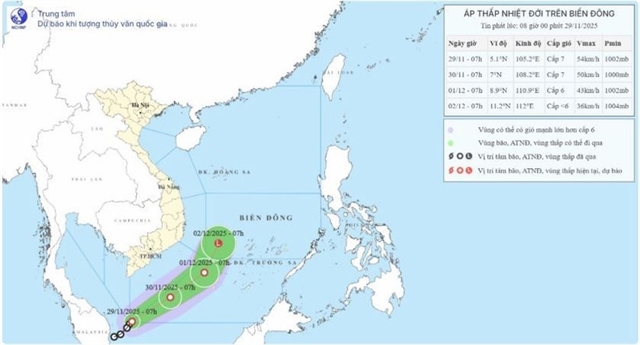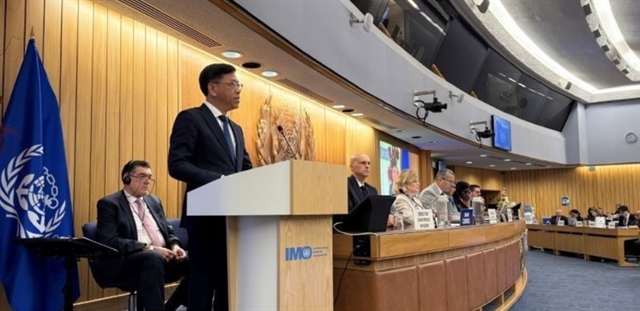 Opinion
Opinion

 |
| Dr Nguyễn Đình Thọ - Director of the Institute of Strategy and Policy on Natural Resources and Environment. — Photo baotainguyenmoitruong.vn |
Dr Nguyễn Đình Thọ - Director of the Institute of Strategy and Policy on Natural Resources and Environment (ISPONRE) spoke to Tài Nguyên & Môi Trường (Natural Resources & Environment) newspaper on land pricing and recent policy changes.
A highlight in the recent draft amendment to the Land Law is the removal of the land price framework. What is the significance of this change?
In implementing the 2013 Land Law and Resolution 19-NQ/TW in 2012, the Ministry of Natural Resources and Environment (MONRE) issued specific requirements on the land price framework and index, as well as prices. Accordingly, the land price framework is the basis on which city and provincial people’s committees issue land price indexes and determine the financial obligations of citizens and businesses.
In addition to this, under the 2013 Land Law, the MONRE twice developed the land price frameworks (in 2014 and 2019). It was required that the land price index be aligned with the Land Law and the land price framework and index with the market pricing.
After considering the average economic growth, wage and inflation rates, along with opinions from different ministries, departments and sectors - especially the finance and justice ministries - the Government decided that the 2019 land price framework would be no more than 20 per cent higher than that of 2014. This is to ensure social welfare and businesses’ land accessibility, particularly small and medium-sized enterprises.
However, although it aimed to be relevant to the market pricing, the central and local land price frameworks and indexes were not able to respond to the market demands. At the same time, many people proposed that the land price framework should be removed to give localities autonomy in building their land price indexes.
Resolution 18/NQ-TW, which was issued in 2022, initiated the removal of the land price framework. Therefore, this draft amendment to the Land Law follows this direction and lets localities decide on their land price indexes.
In the draft, the MONRE also suggests measures to build price indexes in accordance with market principles. For localities that already have maps and databases on cadastral maps and land prices, they can develop the price index by assessing the price based on the value area and the standard lot, considering direct sales and purchase on the market with large sample size, in order to determine the lots with similar value.
People are concerned about how land prices are determined based on market prices, while market prices imply private negotiation and exchange between stakeholders. What are the measures to evaluate the value of land use rights to match the market price?
The policy objective is not to build a price index to match the market but to determine the annual financial obligations of the people and minimise conflict between them and the State in calculating pricing to decide on their financial obligations.
In 2013, land resources contributed seven to eight per cent of budget revenue. In 2021 - 2022, this figure increased to 15 to 20 per cent and up to 35 per cent in several localities. Recently, land resources have been a balancing factor to the needs in socio-economic development, national defence and security.
In other countries such as Japan and South Korea, land prices are also used to determine the financial obligations of the people, at 60 to 70 per cent of the market prices.
The goals here are when we develop a value area and determine the prices of land lots by taking mass price valuation as a reference, areas of high values will have matching price tags based on a large sample size of transactions on the market under normal conditions. The law also specifies that land valuation principles are based on those of the market.
Using the market principles means all prices of the standard lots used for reference must be based on the market prices. The market price here means the comparison to land lots sold on the market, whose prices will then be the reference for other lots.
All land lots must comply with the rules of market supply and demand, competition and the needs of buyers and sellers. People can have different goals, and therefore, this defines the deal and its price.
Another concern raised is that if the land price framework is removed and prices are determined based on market prices, annual tax obligations would increase for people and businesses. Is that true?
People have reason to be concerned. That is why when building the 2014 and 2019 land price frameworks and indexes, we carefully considered how valuation should be conducted so that people’s and businesses’ financial obligations would not see a huge increase.
In this draft amendment, the MONRE also seeks harmony between stakeholders. We can only achieve one goal with each policy tool. One goal is to build a land price index that matches the market prices. The second is to make sure that people’s and businesses’ annual financial obligations are manageable to ensure social welfare and socio-economic development.
Therefore, in the draft, we also state that people’s financial obligations will be decided by the local people’s committee, and must be stable during the span of five years, while also not exceeding 20 per cent compared to previous periods.
According to principles, determining land prices based on market prices means land clearance compensation will be higher. Will that increase house and land prices?
The 2013 Land Law already specifies that land compensation has a specific rate that is not based on the land price framework or index. Localities can determine the rate by multiplying the price index with land price coefficients for each lot. That is why in some places such as HCM City, the compensation could be 20 or 30-fold the price index.
Therefore, in this draft amendment with the removal of the land price framework, and if the land price index increases to match the market prices, relocation and land compensation would remain stable. This is because the compensation has always been based on the market price. — VNS
BOX
Hà Nội is expected to hold a dialogue on administrative procedures relating to land on October 28, according to the city’s newly approved Plan 237/KH-UBND.
Presided by Chairman of Hà Nội People’s Committee Trần Sỹ Thanh, the event will focus on the current progress of socio-economic development tasks in 2022, as well as the government’s and city’s new land-related policies, frameworks and regulations.
The goal is also to understand and promptly address the challenges that people are facing in handling administrative procedures relating to land in the city.
Initiatives, solutions and suggestions to improve the quality of administrative work on land are welcomed. However, complaints and denunciations will not be discussed in this event.
The dialogue will be held in a hybrid format and is open for registration until October 21.
Participants shall fill in the registration form included in Hà Nội’s Plan 237/KH-UBND and send it to the city Department of Natural Resources and Environment via email at vanthu_sotnmt@hanoi.gov.vn or to the address at No.18 Huỳnh Thúc Kháng Street, Đống Đa District.




